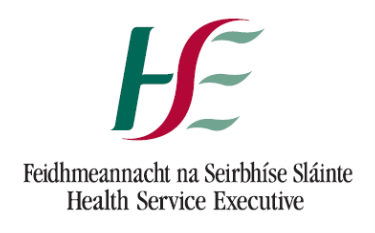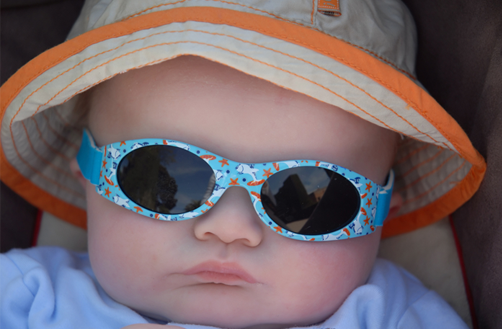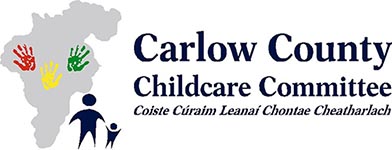HSE – Sun safety for babies and children

Follow the link to bring you to the HSE guide hse wellbeing sun safety
Read the article below :
Sun safety for babies and children
1. Preventing sunburn
Babies and children have very sensitive skin. Getting sunburnt as a child increases the risk of skin cancer in later life.
Ultraviolet rays (UV rays) come from the sun and cause sunburn. You should protect your child from sunburn.
Too much exposure to UV light can cause skin cancer. If your child gets repeated sunburns, this could increase their risk of getting melanoma later on in life. Melanoma is the most serious form of skin cancer.
Sunburn can happen both in Ireland and abroad. About 90% of harmful UV rays can also pass through light cloud, so take care on cloudy days too.
Always protect your child’s skin from the sun. This is especially important in Ireland from April to September when the sun’s UV rays are the strongest.
To best prevent UV damage and sunburn you and your child should:
- seek shade, especially between 11am to 3pm
- cover up skin with clothing and hats
- use sunscreen
Staying in the shade
If your baby is under 12 months old, you should keep them in the shade. Older children should also be in the shade if possible, but especially between 11am and 3pm. This is when UV rays are at their strongest.
Always use a sunshade on your buggy or pram.
Sun protective clothing
You can protect your child’s skin from UV rays by covering it with clothes. You should dress babies in loose-fitting outfits that cover their arms and legs.
Make sure the clothes are made from close-woven material that does not allow sunlight through.
Some fabrics give better UV protection than others:
- Linen, cotton and hemp let less UV rays through.
- Dark clothes block more UV rays than light-coloured clothes.
- Clothes labelled ‘UPF’ block UV rays from passing through.
Babies and children should also wear a hat with a wide brim to protect their faces and necks from the sun. Hats with neck flaps at the back can also help protect your child’s neck.
If your child is going to swim, consider swimwear that covers their shoulders and back.
Sunglasses
You can also protect your children’s eyes from UV rays with sunglasses. It’s important that they wear sunglasses that give as close to 100% UV-protection as possible. Wraparound ones are best. Choose sunglasses that meet the I.S. EN 1836 standard.
Too much sun can cause cataracts in later years as an adult. In rare cases, it can also cause cancer in the eye.

Sunscreen
You should use sunscreen or sun cream that:
- has a sun protection factor (SPF) of 50 or higher
- protects against both types of rays that can damage skin (UVA and UVB)
- is suitable for your child’s age and skin
The SPF is how much protection there is against UVB. You should look for one of these symbols on the bottle to check it also protects against UVA.


Patch test it on your child’s skin first. If your child’s skin gets irritated, try sunscreen for sensitive skin or try another brand.
Putting on sunscreen
Cover exposed parts of children’s skin with sun cream. Don’t forget to cover all areas especially the face, ears, neck, nose, lips and tops of the feet. You should do this around 20 minutes before they go out in the sun.
Reapplying sunscreen
Reapply it every 2 hours and always after playing outdoors or swimming. This includes ‘waterproof’ and ‘water-resistant’ sunscreen. Cover all exposed areas.
Sunscreen and babies under 12 months
For children under 12 months, it is best to keep them out of direct sunlight. For example, by providing shade when they are outdoors and wearing protective clothing and hats.
It’s better in the first 6 months to protect babies from sunlight rather than use sunscreen. This is because their skin doesn’t absorb sunscreen as well as older children. Do use sunscreen if it’s not possible to avoid sunlight.
If using sunscreen, choose one that is suitable for babies. Apply small amounts of sunscreen to their exposed skin.
Tanning
A tan does not protect against sunburn. A tan is your skin’s way of protecting itself against further sun damage. Even when a tan fades, the skin damage caused by the tan never goes away.
Vitamin D
Make sure that your child gets enough vitamin D. This is important.
The summer sun on your child’s skin is one way of your child getting vitamin D. But it is so important to keep your child’s skin safe from the damage that the sun’s rays can do.
All children under 5 years of age are advised to take vitamin D supplements during winter. Give them one each day between Halloween (October 31st) and St Patrick’s Day (March 17th) each year.
